I haven’t posted a painting progression in a while, so I thought I’d share something along those lines again here today. I’ve had quite a few people asking me about how I work – not only about the abstract marks I make and how I make them, and not just about the more rendered areas either, but how those two elements in my work are combined – or how each piece joins abstract and realism. As far as a process goes, it’s not entirely the same every time, so I’ll share a few different paintings that started and progressed in somewhat different ways but essentially get to a finish that feels cohesive as a piece and gels with the rest of my work overall.
If you haven’t already seen any of my other progressions posted here or my mark-making articles, check them out as well for more like these. Those articles can give you an idea as to how I make the initial marks and the abstract, atmospheric, or textural compositions. In the following images, I’ve drawn a quick outline to indicate what I saw in the marks, which is the first stage in pulling the forms forward out from the abstract. It’s similar to how we see familiar forms in clouds. I have included outlines in these images so that it’s easy to compare the starts and finishes, and see what I saw in the initial marks.
___________________________
Hylonome, oil on canvas, 24×36”
This painting was originally created by turning the canvas many times and layering the abstract marks and textures. I had it stored in my studio horizontally and out where I could see it every day for months after initially making the abstract image. I just really dug the abstract the way it was, and then one day I turned it vertically, and saw this character that was an amalgam of horse and human. That imagery was very timely in a metaphorical sense, and was sort of a calling of sorts, which is a lot of times how these works come to be.
___________________________
Dinami, ink and oil on sized paper, 5×7”
The initial marks for this painting were done in ink on watercolor paper. I was mainly just experimenting and exploring with the materials, pushing ink around and using some different tools, doing some comparing and contrasting of different surfaces. I saw a face in the marks (indicated in the middle drawing), and decided to paint into those marks to bring the face forward from the marks. Since this was done in ink on paper, I coated the piece with polymer before painting in oil. Notice that the face is not exactly like the initial one I saw. For me, a lot of times, the initial visual I get is used mainly as an inspiration and suggestion of image, then I take a look at overall composition and remind myself what it was about the initial visual that really stuck with me. It can be mood, attitude, movement, flow, or overall dynamic, and I want to be sure to not lose that as I develop it further.
___________________________
Promise, oil on panel, 18×24”
The start for this painting was another one that I just really loved the way it was in its abstract state. It had been living with me in my studio for months before I decided to paint into it. When I saw this figure that felt as if it were floating – almost in a listless sort of manner, with the limbs forward and torso bent in a concave position – it was the mood and visual I was intending to portray in an image I had been writing out ideas for but hadn’t sketched yet (which is so often how I tend to work, or how my images tend to come to be. The concept lives with me internally and shows itself eventually in some way or another). The figure’s location in the composition, though, was a bit heavy in the top left corner. It needed room around it. Some things shifted in order to give the figure some room, but I was able to retain the overall feel of the figure.The hands on the outer edges were added later, as well as some building up of the atmospheric elements.
___________________________
Arati, oil on collage/acrylic on panel, 5×5”
The abstract for this one was created with book pages and some acrylic mark-making. As with the other images here, I didn’t have any intention initially other than to make some marks and create an abstract that had potential to paint into later. Again, I saw a face (I see faces in everything), and you’ll notice that this one also didn’t stick to the exact placement of the shapes I saw mainly because they weren’t going to be anatomically correct. But I was drawn to the sweep of the neck and jawline and that incredible eye that I’ve circled in green here. That eye was just happenstance from the marks I had made with acrylic, and although it ended up getting lost in order to make room for the bigger picture, it was definitely the impetus for building onto this abstract. The swirling of the ear caused by the abstract marks was pretty nice too, and I wanted to be sure to maintain that. Many times, it’s really a game of connecting key elements I’m initially drawn to and leaving passages of the abstract to show through. A big part of how the rendered areas feel connected is by fading in and out of the abstract with varying degrees of opacity in the layers.
__________________________
Aria, oil on panel, 20×30”
This abstract was too chaotic for me as an overall piece, but there were so many areas that were like tiny otherworldly environments. This is one I added to abstractly with quite a few layers before finding the imagery that you see here as the finish. When I saw this figure standing there on the left, that was it. The figure itself was its own little world, and while I did maintain quite a bit of the texture and marks in the large surrounding areas, I had to temper the chaos a lot by adding translucent layers in order to allow for the texture/marks to show through without taking over. And I just really fell in love with the mood and dynamic of the figure I found in the marks. I originally saw two heads, or maybe it was one head and a mask, with hair blowing all around, and arms up and outstretched.. and that world within the figure/torso was something that was mainly from the initial marks in the abstract underpainting.
__________________________
Environments and Abstracts as they are
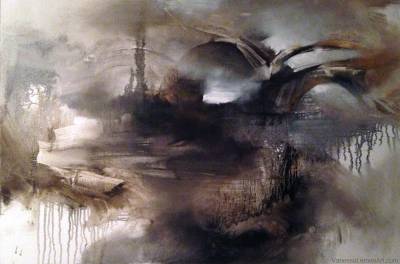
This is the abstract start to Hylonome (at top of article) in horizontal orientation instead of vertical
I have a studio full of abstract paintings to surround myself with everyday. I am constantly creating these. Sometimes, something will jump out at me and I decide to paint that. And sometimes, I live with them the way they are as abstracts, developing them a bit more, but essentially leaving them as they are. I see many of them as fantastical environments, or metaphorical compositions of otherworldly forms. I have so many of these environments, but I don’t tend to share them as much. I’ve only recently started sharing them, and I intend to share more in the near future. Here are a few examples of those – in all different stages.
__________________________
Progression of Lani, oil on panel, 5×5”
Last but not least, a progression from start to finish to show an example of how an image may develop from seemingly chaotic marks to the final piece.
If you’re interested in how I make a lot of these abstract marks, I’ve posted several articles here on Muddy Colors that demonstrate that, and you can check them out by visiting my contributor page and clicking on the other articles. If you haven’t seen those before, they’ll give you an idea how these came about from blank canvas, using various tools and surfaces.
I hope you enjoyed seeing a bit of how my paintings come to be. Thanks for checking it out!


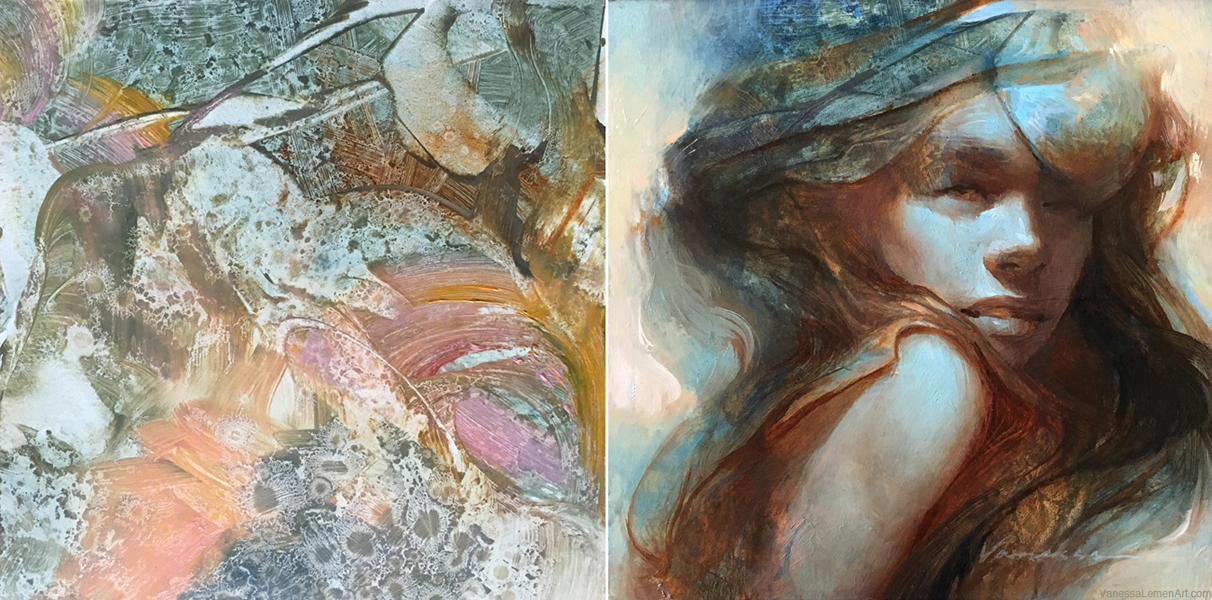
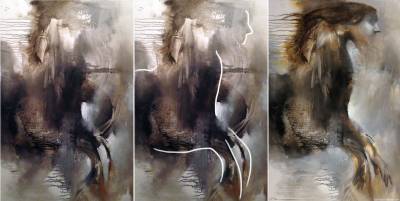
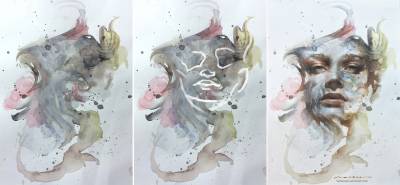
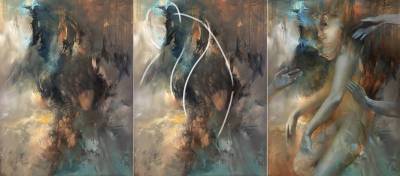

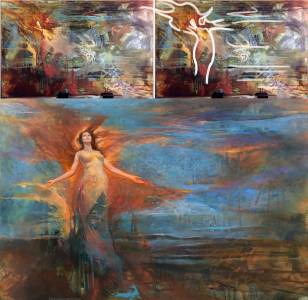
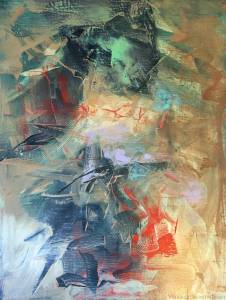
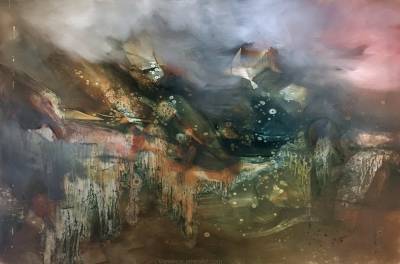

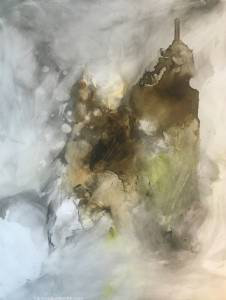
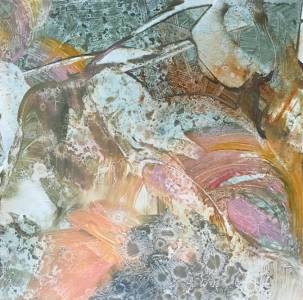
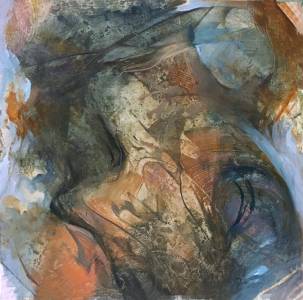
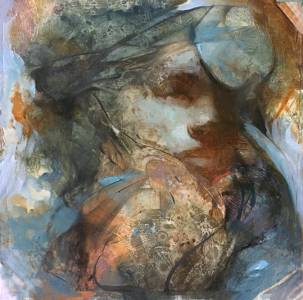
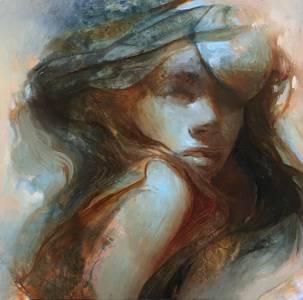
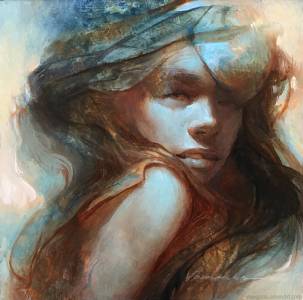


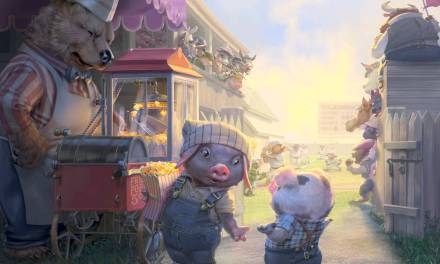
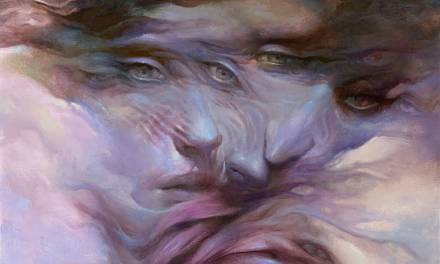
This looks like so much fun! Gonna give it a fling…
Great to hear you are going to try it out. It’s very fun, indeed! 🙂
Really awesome!! The abstracts are insane too
Thanks, Ben! The abstracts are so captivating to me as far as process goes. I get pretty wrapped up in them. I really, really enjoy making them! 🙂
I enjoyed this trip through your creative process. Very interesting, and worth a try.
Thanks much, Richard! I’m so glad you enjoyed the trip. I hope you do get the chance to try something similar. There is a lot of room for discovery in this way of working, that’s for sure! Thanks again, and all the best! 🙂
Thank you for sharing this! I have often admired your work and wondered about your process, and this answers many questions. I’m really inspired to try it now!
hi, Marci – You’re very welcome! And thank you for taking the time to check out the article. If you’re interested in reading a bit more about my process, there are several other articles here on MC that I’ve posted in the past that collectively can give even more insight. So glad to hear you’re inspired and that you’re going to try some of this out! Thanks again, and all the best!